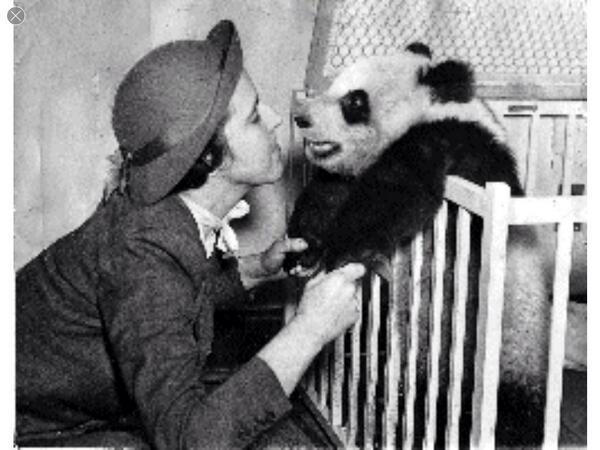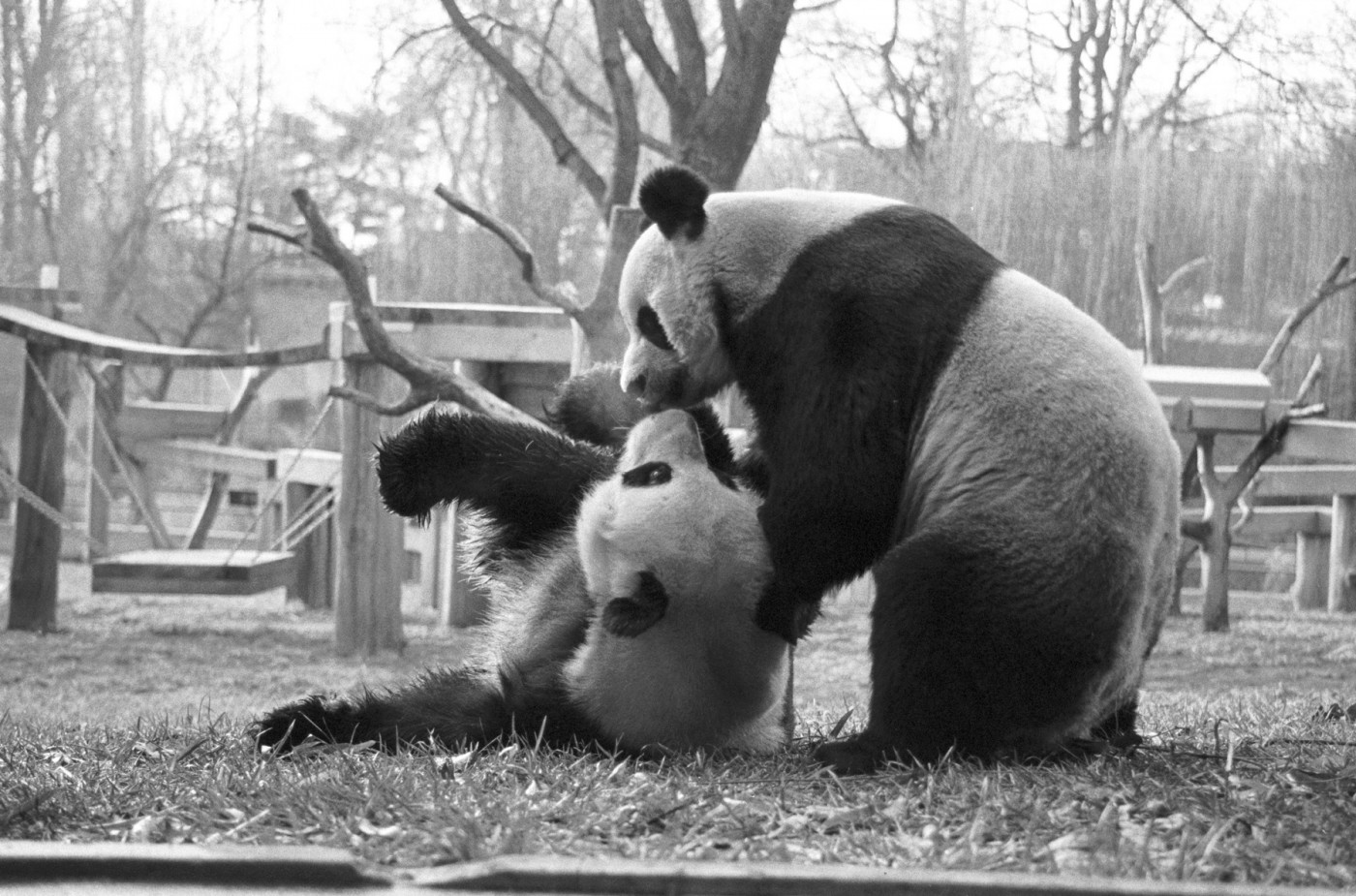Humans adore pandas—which is also why the species was picked as an ambassador for wildlife conservation. But they don’t seem to have helped anyone but themselves. We trace the history of our panda obsession—and explain the debate over single species conservation.
Editor’s note: When there isn’t a big headline making news, we often pick a Big Story on a topic that we think will be interesting to you. We’d be just as happy to take requests from you. Do write to us at talktous@splainer.in. We’d also love to hear what you think of our leads on these kinds of less-newsy stories on the grand theft of Indian artefacts, the confusing world of skincare, the debate around Cleopatra’s race etc. Interesting? Or more like ‘bore mat kar, yaar’?
Researched by: Rachel John & Aarthi Ramnath
The rise of the furry rockstar
About that panda: Here are some basic deets. It is a member of the bear family, but the only kind of species in its genus. Red pandas belong to the same family as raccoons and skunks. The giant panda lives solely in the mountains of China—usually at altitudes of 1,500-3,400 metres. There are 1,864 pandas in the wild—and 600 in captivity. Cue adorable clip as a taste of delights to come:)
Mad love at first sight: In 1889, a missionary saw the pelt of a wild panda—and sent it back to Paris. And in 1919, the American Museum of Natural History exhibited its first mounted specimen. The first live panda to make it to the West was transported by a New York designer Ruth Harkness—who introduced the kidnapped 10-day old cub to eager journalists in a hotel room—whose windows were kept open "to preserve the native Tibetan climate." Check out the icky New York Times report on this unprecedented photo-op. Below is Harkness with Su Lin:
 The panda was eventually given to a Chicago zoo—where it attracted 53,000 people on the first day.
The panda was eventually given to a Chicago zoo—where it attracted 53,000 people on the first day.
The ultimate brand ambassador: Thanks to its good looks, the big bear was picked by two separate entities as their brand ambassador—which catapulted it to global fame. In 1961, the World Wildlife Fund was established—and it’s also the year when the first panda Chi Chi arrived at the London Zoo. It was serendipitous timing, according to one of WWF’s founders:
[W]e wanted an animal that is beautiful, endangered, and loved by many people in the world for its appealing qualities. We also wanted an animal that had an impact in black and white to save money on printing costs.
Bit of trivia: Chi Chi was flown to Russia to mate with Moscow Zoo’s panda resident An An. This love affair was doomed from the very start:
The media breathlessly covered the long-distance love affair. Yet it was doomed from the start. When the bears first met in Moscow, An-An attacked Chi-Chi and zookeepers had to separate them with brooms, one newspaper reported. The pandas stayed in separate cages that summer. In the fall, keepers arranged another meeting, but this time, Chi-Chi “slapped” An-An in the face. Soon after, Chi-Chi returned to London, prompting headlines like “From Russia ... Without Love.”
Humans would not fully grasp the panda’s complicated relationship with sex until years later.
Enter, the Chinese: Beijing created four panda preserves in the 1960s—and started sending wild-caught pandas as state gifts. Though the first rumoured instance of panda diplomacy dates back to the seventh century—when Empress Wu Zetian gifted 70 panda pelts and a pair of live giant pandas to the emperor of Japan. The most famous of these modern-day ambassadors were Lin Lin and Sing Sing—gifted to President Nixon on his 1972 visit to China—a historic moment in global diplomacy. As you can see, they got on better than An-An and Chi-Chi:
 Today, China no longer gifts its pandas. They are only available on long-term loan to select zoos.
Today, China no longer gifts its pandas. They are only available on long-term loan to select zoos.
The ‘save the panda’ campaign
In the 1980s, pandas were an endangered species on the brink of extinction. That’s when China and WWF came together to set up protected sanctuaries—and a first-of-its kind massive breeding program. One reason: WWF and zoos needed a supply of pandas—but couldn’t keep taking them out of the wild:
“If you’re going to sell people on giant pandas, you need to show people a giant panda,” he said. (Pandas are “great showmen,” [scientist William] McShea added. “Giant pandas will sit there and essentially do tricks for you all day long.”)
The great breeding experiment: This is when humanity truly faced the formidable challenges of panda sex:
Female pandas ovulate just once a year for one to three days… In captivity, however, vets have to introduce a pair of pandas at just the right time. Even then, the bears may prefer to swat at each other rather than have sex.
Then scientists stumbled on a bright idea: panda porn.
At one of the most famous breeding facilities in China, scientists showed a video of pandas mating to a five-year-old female bear named Ke Lin because she kept rejecting her mate, Yongyong. “We played them the film and she took great interest in it,” a spokesman at the Chengdu facility told the Independent. “After that, there was no stopping her and they mated successfully.”
FYI: pandas have also been helped along with Viagra and “sex training programs.”
The stellar results: The number of wild pandas have increased from 1,114 in the 1980s to 2,060—jumping by 17%. And they are no longer classified as ‘endangered’. Their new status: ‘vulnerable’. The number of pandas in captivity thanks to the breeding program: 600.
Point to note: There is plenty of controversy over breeding wild animals in captivity—since most of them never make it back to the wild. All such attempts with pandas have failed. OTOH, here’s what a documentary filmmaker who tracked wild pandas has to say:
Keeping anything in captivity is inhumane. But I think pandas are probably one of the most prioritized animals in captivity. Seeing both wild pandas and captive pandas, the wild pandas are not having as good a living as a panda in captivity. Pandas in captivity are like kings and queens. They have the best food, the best everything. From what I’ve seen, they are often more prioritised than humans.
There’s plenty of evidence in the panda clips out of China—like this one:
The panda effect: Next to nada
Pandas have failed in their primary task—to serve as ambassadors for the conservation of all wildlife. Many of the other animals in panda habitats have not benefited from its rockstar status—as one 2020 study revealed. Between 2008 and 2018, leopards had disappeared from 81% of the giant panda reserves, snow leopards from 38%, wolves from 77% and dholes from 95%. One big reason: pandas only roam at a range of 13 sq kilometres—which marks the limits of their protected territory. But larger predators need over 100 sq km—and therefore remain at the mercy of poachers and loggers.
The data raised serious questions about panda conservation:
Panda conservation doesn’t appear to be benefiting other species, or the wider ecosystem. These findings shake the foundations of one of conservation’s most enduring ideas — that investing time and money into protecting particular large, influential species can pay dividends for the other species and habitats they coexist with.
Though to be fair, pandas have helped preserve the numbers of smaller carnivores and birds.
The harshest take: Some panda critics point out that the species is an evolutionary dud. Two million years ago, pandas decided to eat only bamboo—which offers little nutrition and leaves little energy for sex. All of which suggests that they are poorly adapted to survive—and perhaps an undesirable choice for conservation. Our conservation dollars may be better spent elsewhere:
We spend millions and millions of pounds on pretty much this one species, and a few others… So maybe if we took all the cash we spent on pandas and just bought rainforest with it, we might be doing a better job.
The debate over single species conservation
Focusing on a single species to help protect a larger habitat is not alway a fool’s errand. It depends on what kind of animal you pick:
Flagship species: The pandas koalas are excellent examples of animals picked purely for their appearance:
The identification of a flagship species relies heavily on the social, cultural, and economic value of a species. They are often “charismatic megafauna,”—large animals with popular appeal due to their appearance or cultural significance.
These glamorous mascots do not always play a vital role in preserving their habitats. But they can help become a powerful symbol for conservation. Example:
The movement to end seal hunting in the Arctic found its flagship species in the juvenile harp seal. Polar bears are the unchallenged flagship species associated with climate change.
Keystone species: are essential to their larger ecosystem—which would be greatly changed or even die without their presence. No other species can fulfil their role. For example, when the US eradicated grey wolves from Yellowstone Park, it had a catastrophic effect on fish, beavers and songbirds. Keystone species are often less “charismatic” than flagship species—but far more important. For example, everyone is worried about koalas surviving in Australia—but their habitats would not change very much if they disappear. Far more important: the humble, woylies—a gerbil-like endangered mammal—that isn’t quite as easy on the eye.
Umbrella species: Now, keystone species play a critical role in the food web. But other species are valuable because of the vast area they need to thrive:
Umbrella species have large habitat needs, and the requirements of that habitat impact many other species living there. Most umbrella species are migratory, and their range may include different habitat types.
So creating sanctuaries for them automatically protects large swathes of critical habitat. An example:
The Siberian tiger, an endangered species, is an umbrella species with a range of more than 1,000 kilometers (620 miles) in Russia’s far east, with territory stretching into China and North Korea. The species range includes heavily forested ecosystems in both temperate and boreal (subarctic) biomes. Populations of deer, boar, and moose are under the snowy “umbrella” of the Siberian tiger range.
As for the Indian tiger: It is both a flagship and umbrella species—and plays an important role in the ecosystem by reining in the number of herbivores. So not quite as useless as the panda:)
The bottomline: Many conservationists have long argued that it is a mistake to focus on a single species—however valuable. It narrows the focus to creating “islands of wilderness” for these animals—rather than saving entire ecosystems—which include humans. Our focus on pandas and tigers turns nature into some exotic thing that exists in zoos and sanctuaries. The reality, however, is this:
[W]e all exist within ecosystems and depend on the services they provide, from water purification to crop pollination. Indeed, most of the world’s remaining biodiversity exists alongside humanity — all 8 billion of us. To conserve wildlife, people will need to steward the plants and animals in their own backyards, in cities, in places they consider their home.
Reading list
Vox has the best deep dive on the history of panda conservation—and its perils. Smithsonian Magazine looks at America’s long love affair with the panda. The Guardian reports on the failure of the panda to protect other wildlife—while the Big Think has a far harsher take on their ecological value. This National Geographic guide is very good at laying out all the different kinds of species vital to conservation. Yale Environment 360 looks specifically at umbrella species. New York Times and Phys.org are good on the larger debate over single species conservation.


 souk picks
souk picks